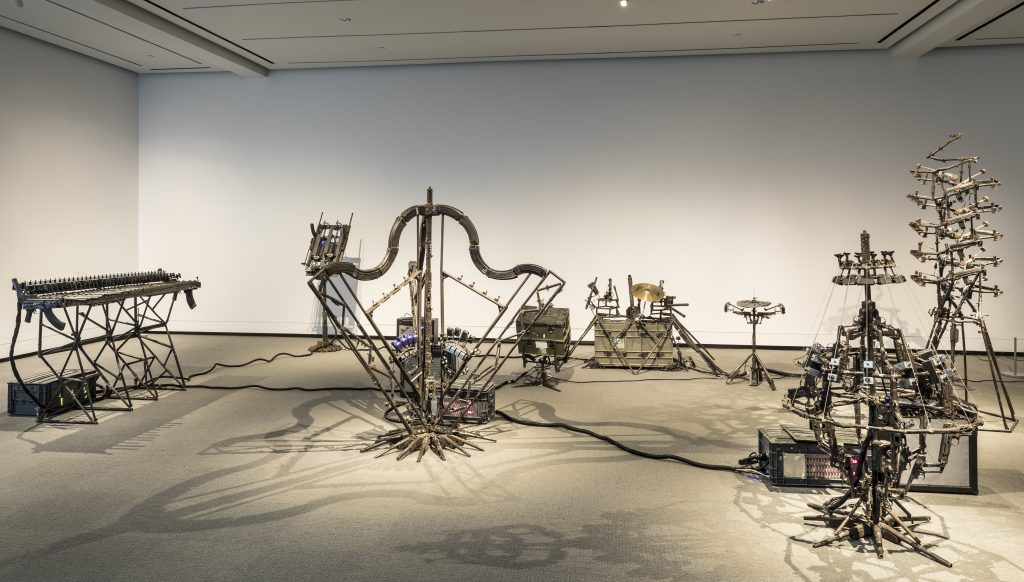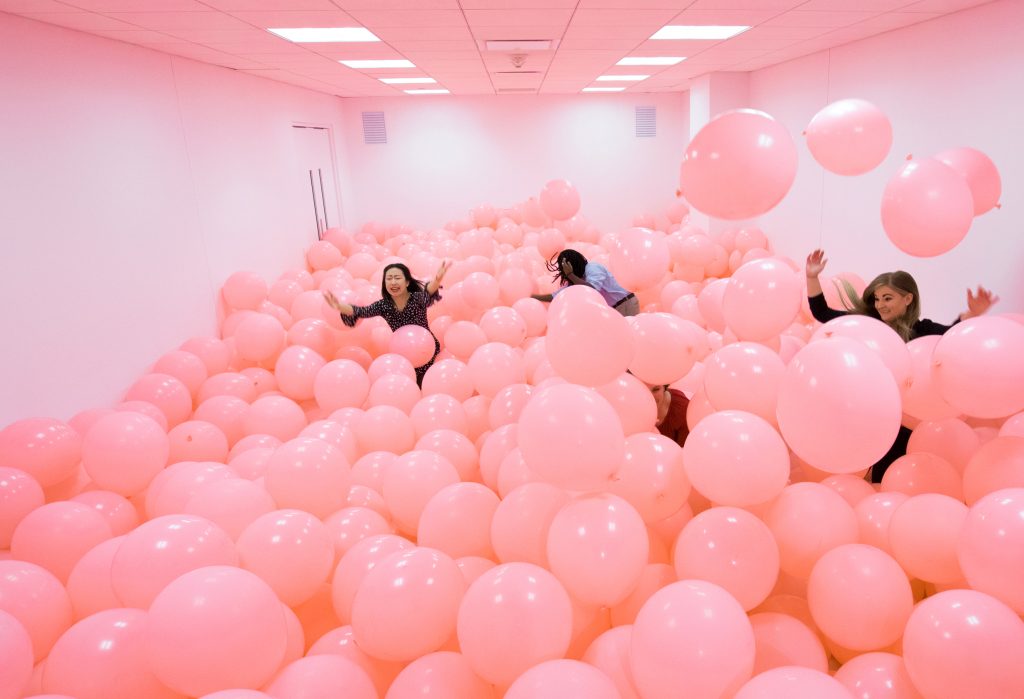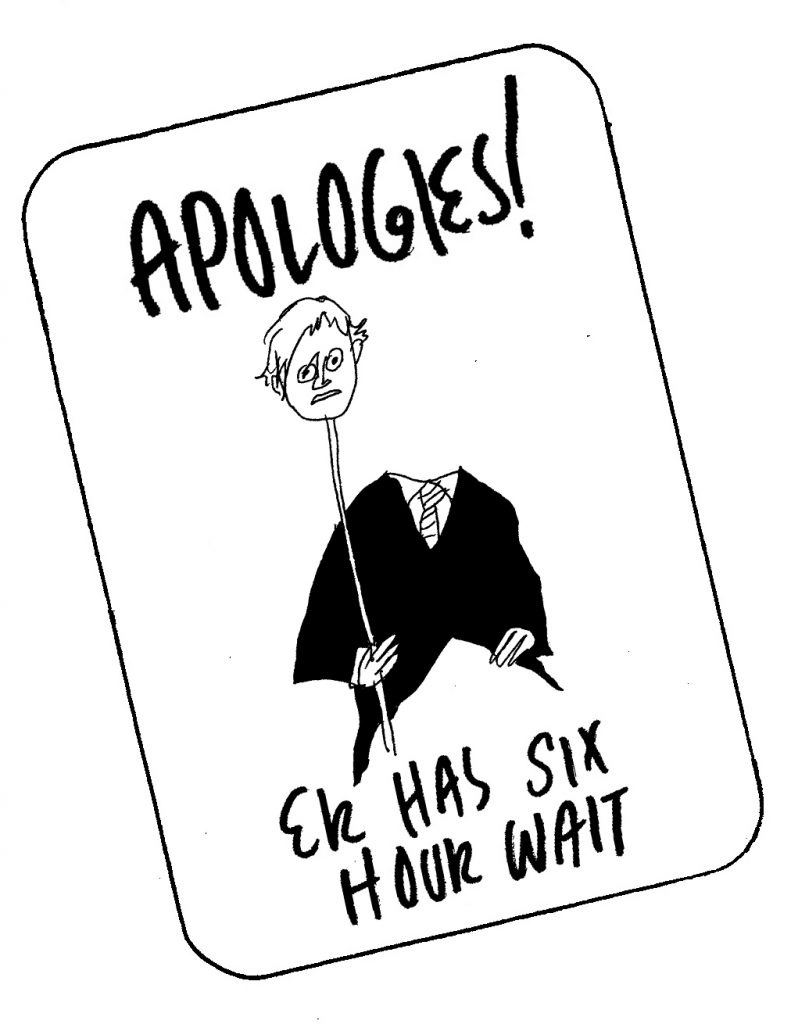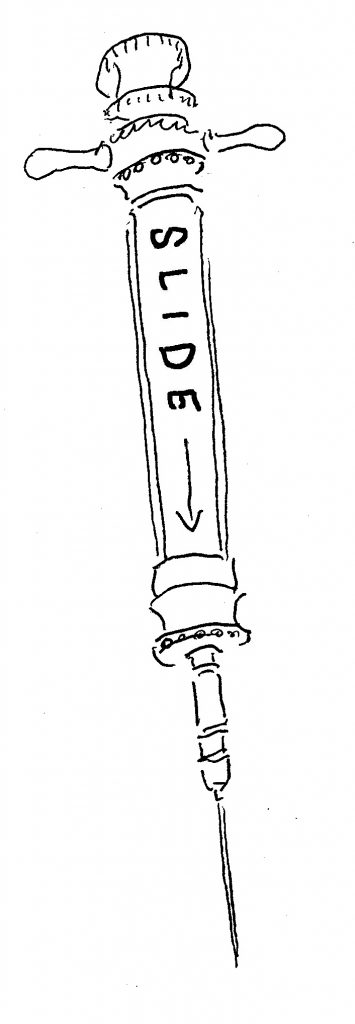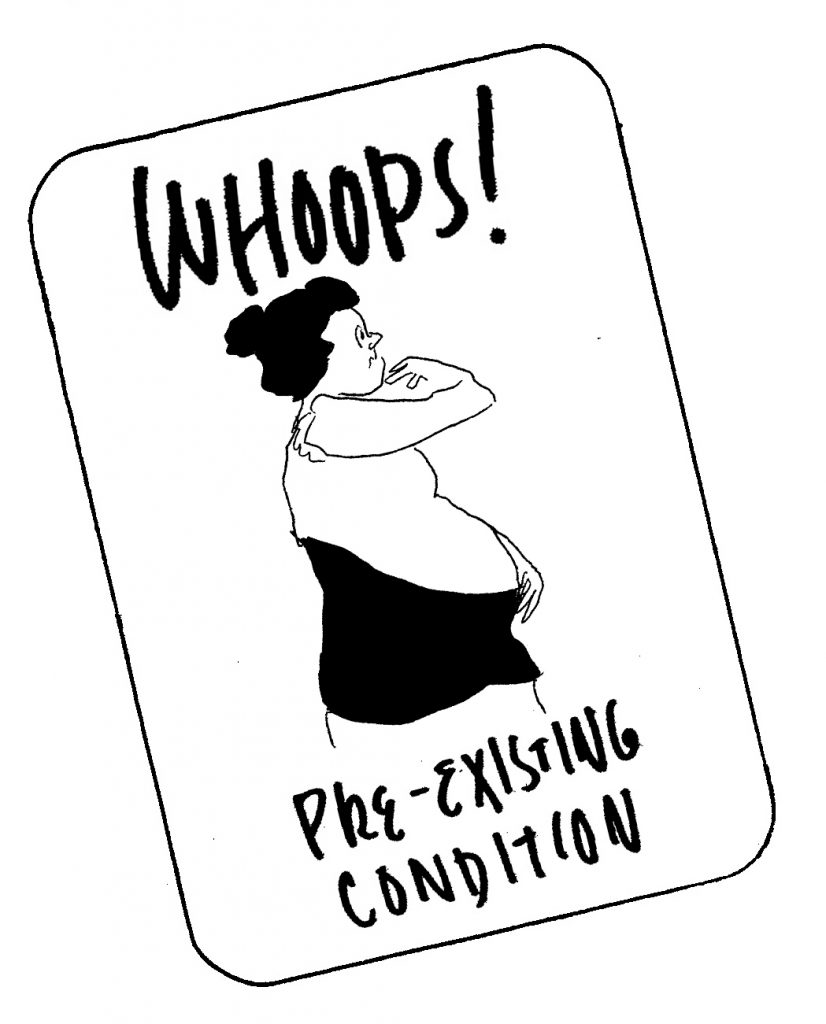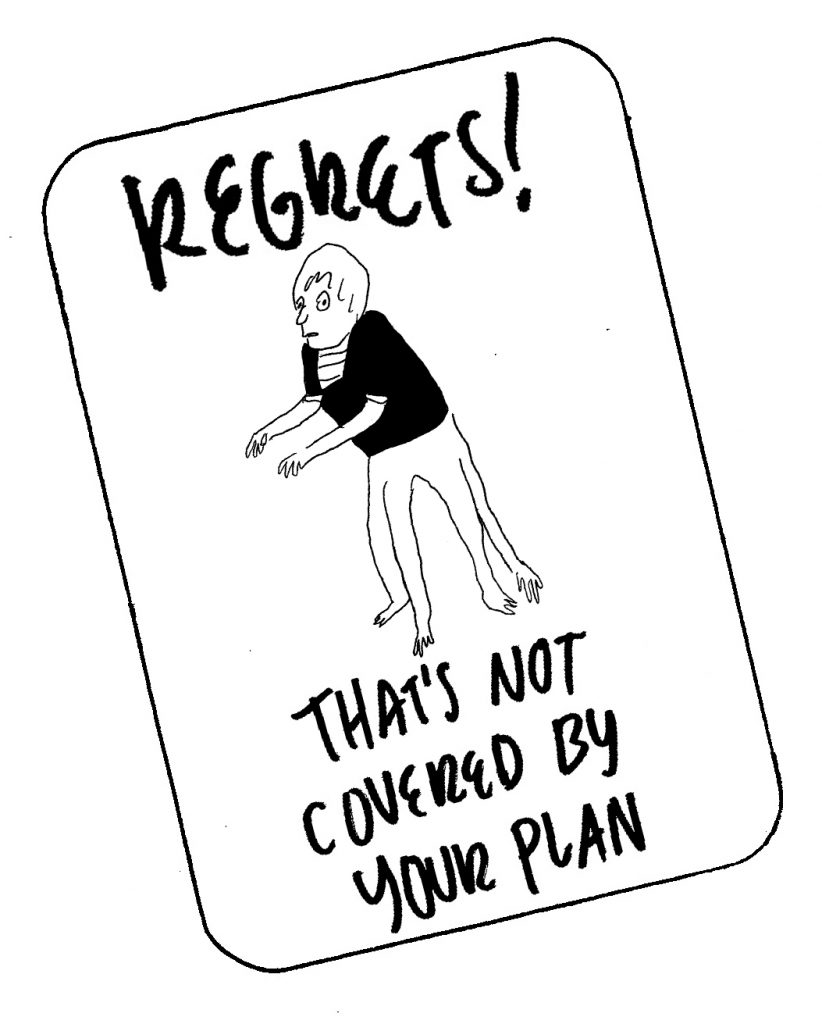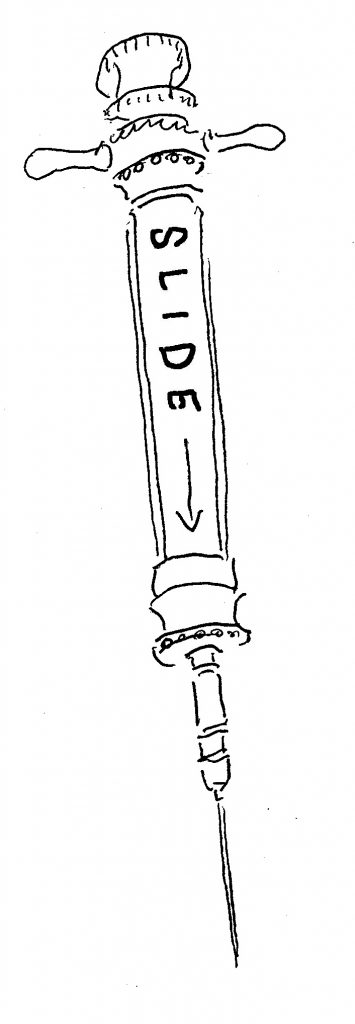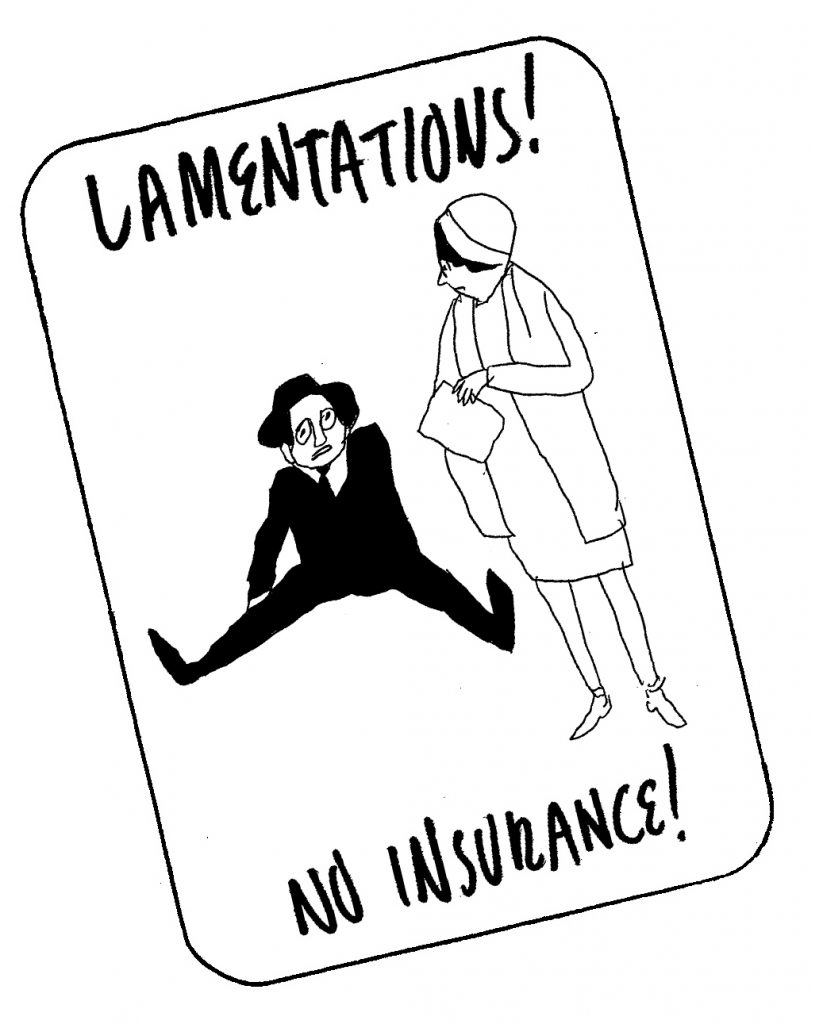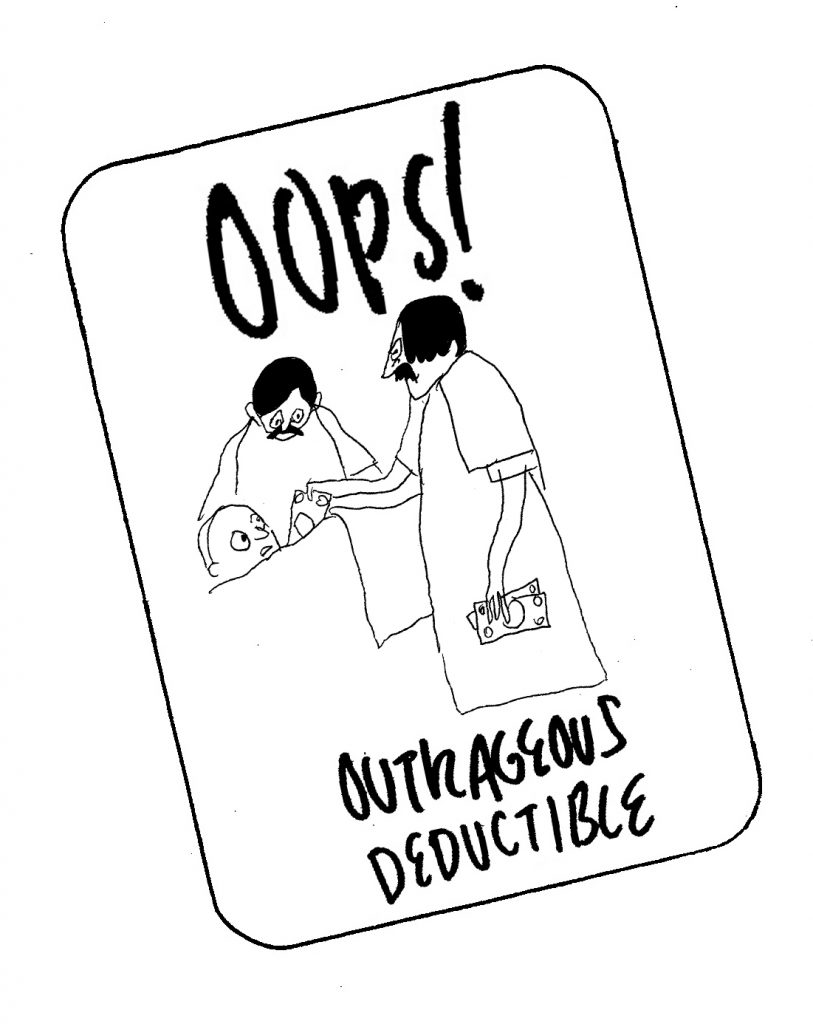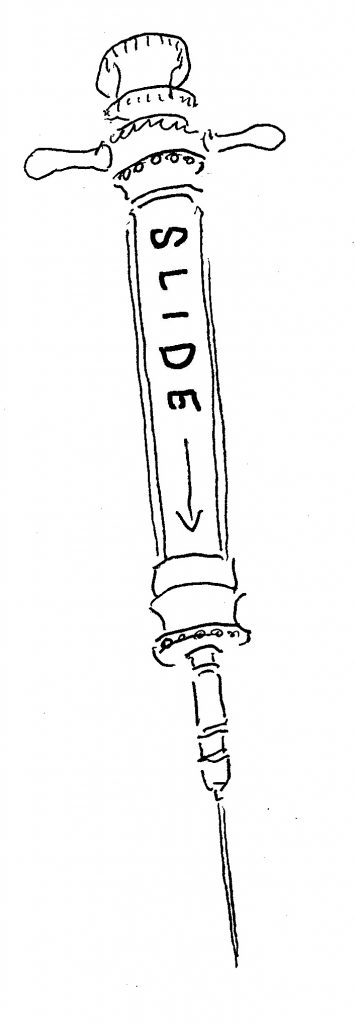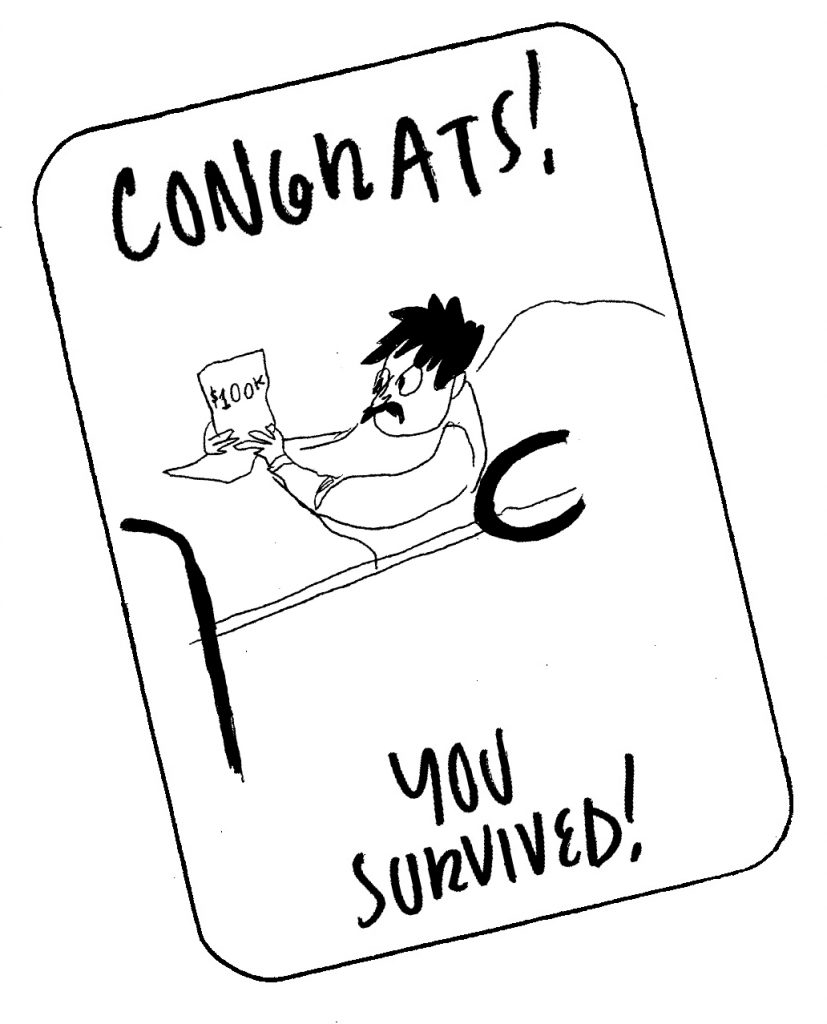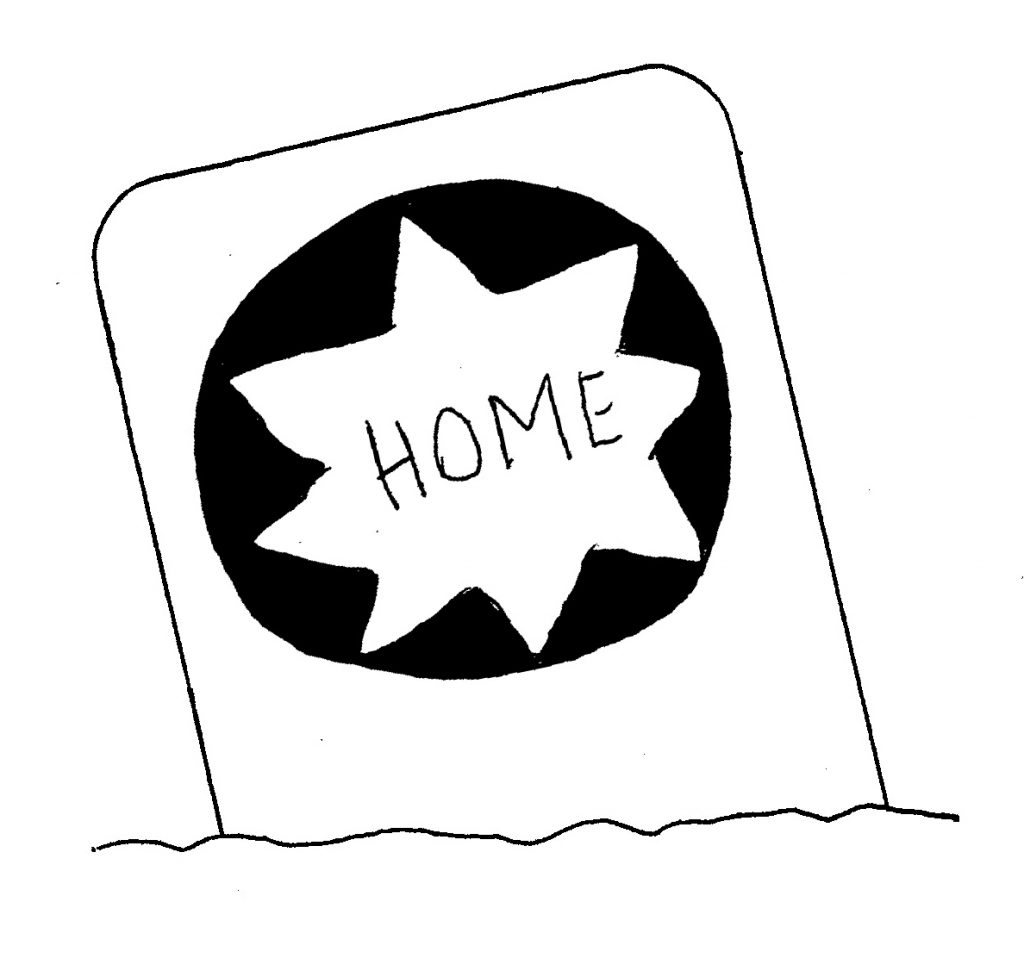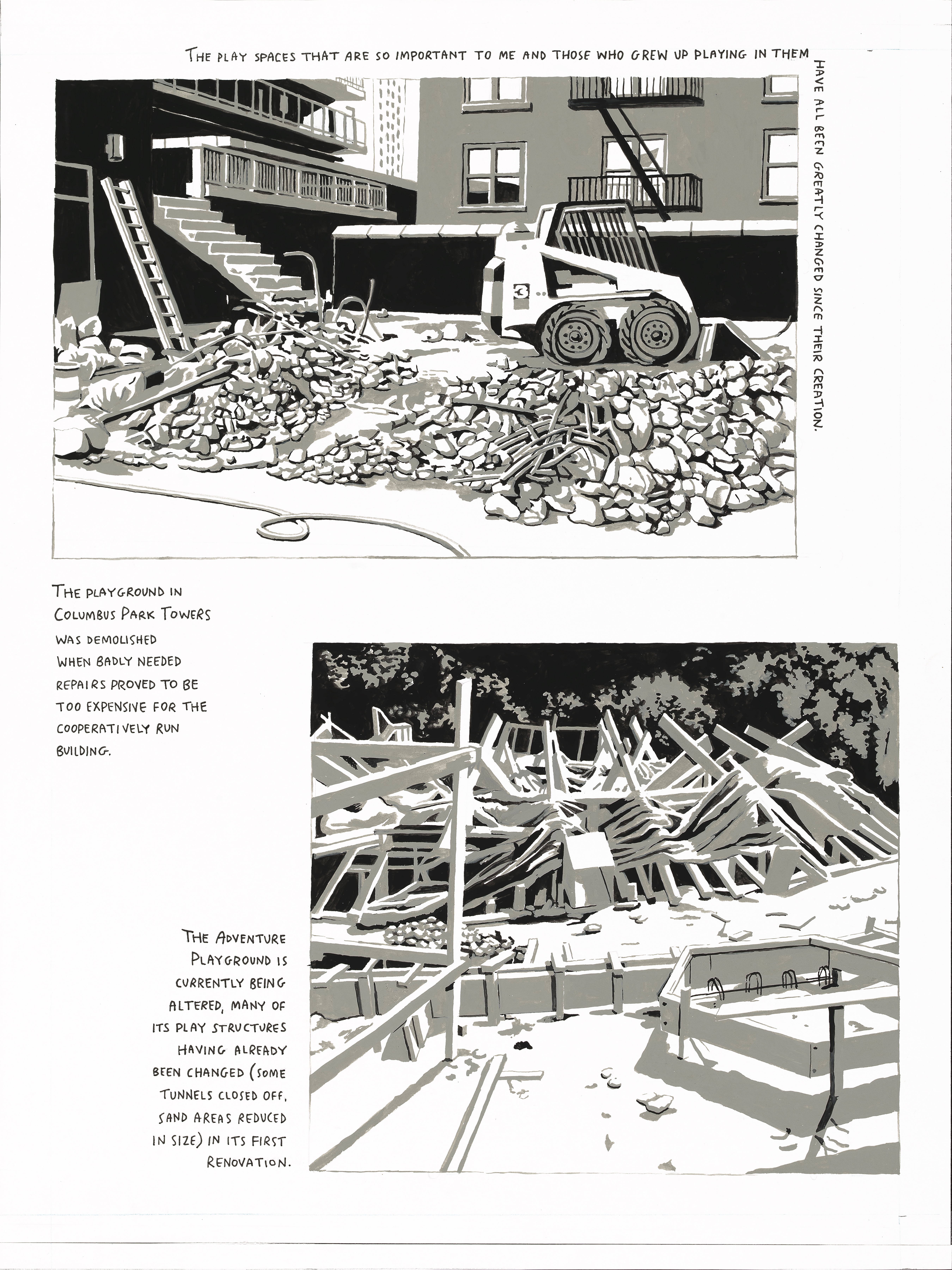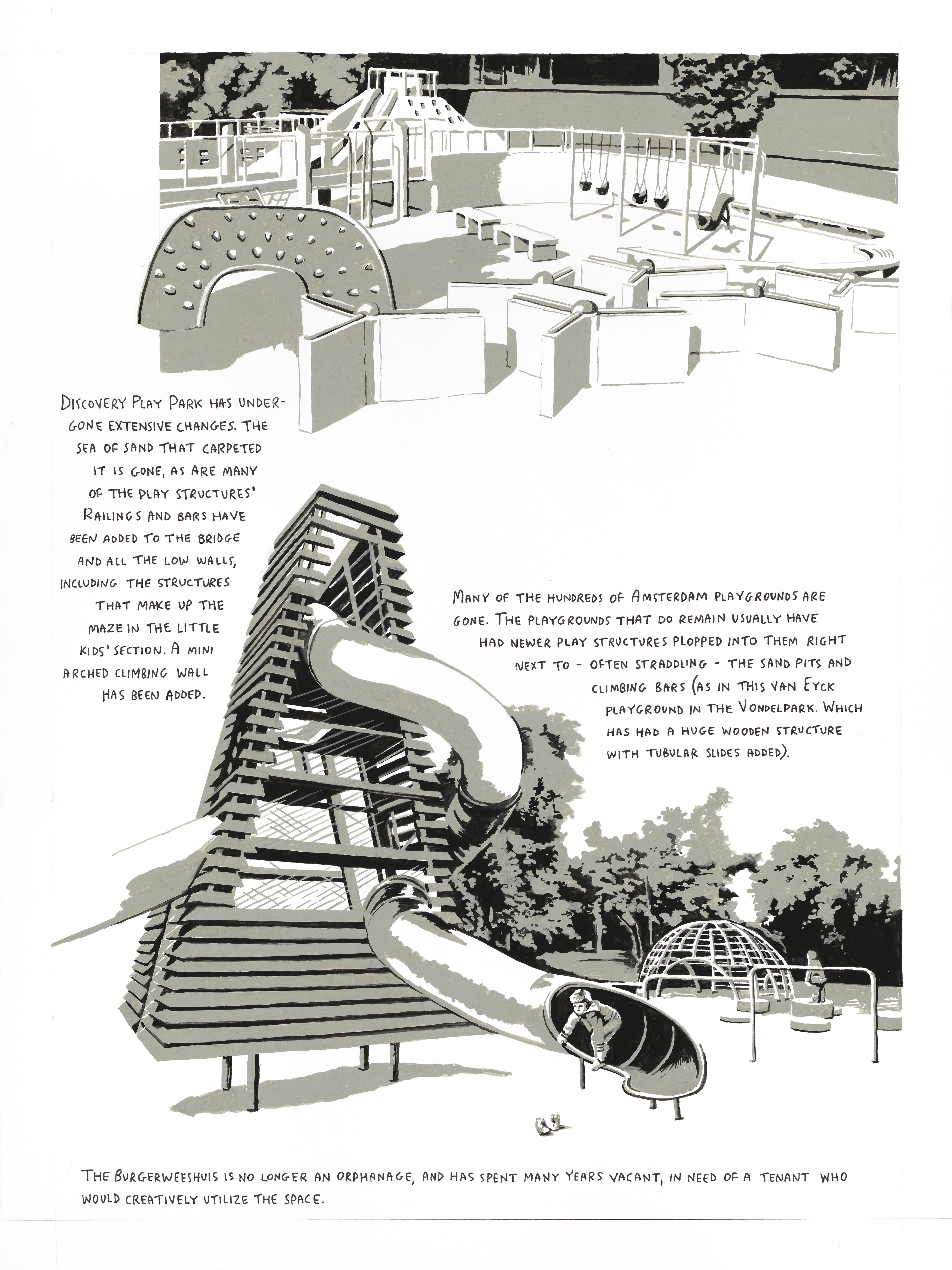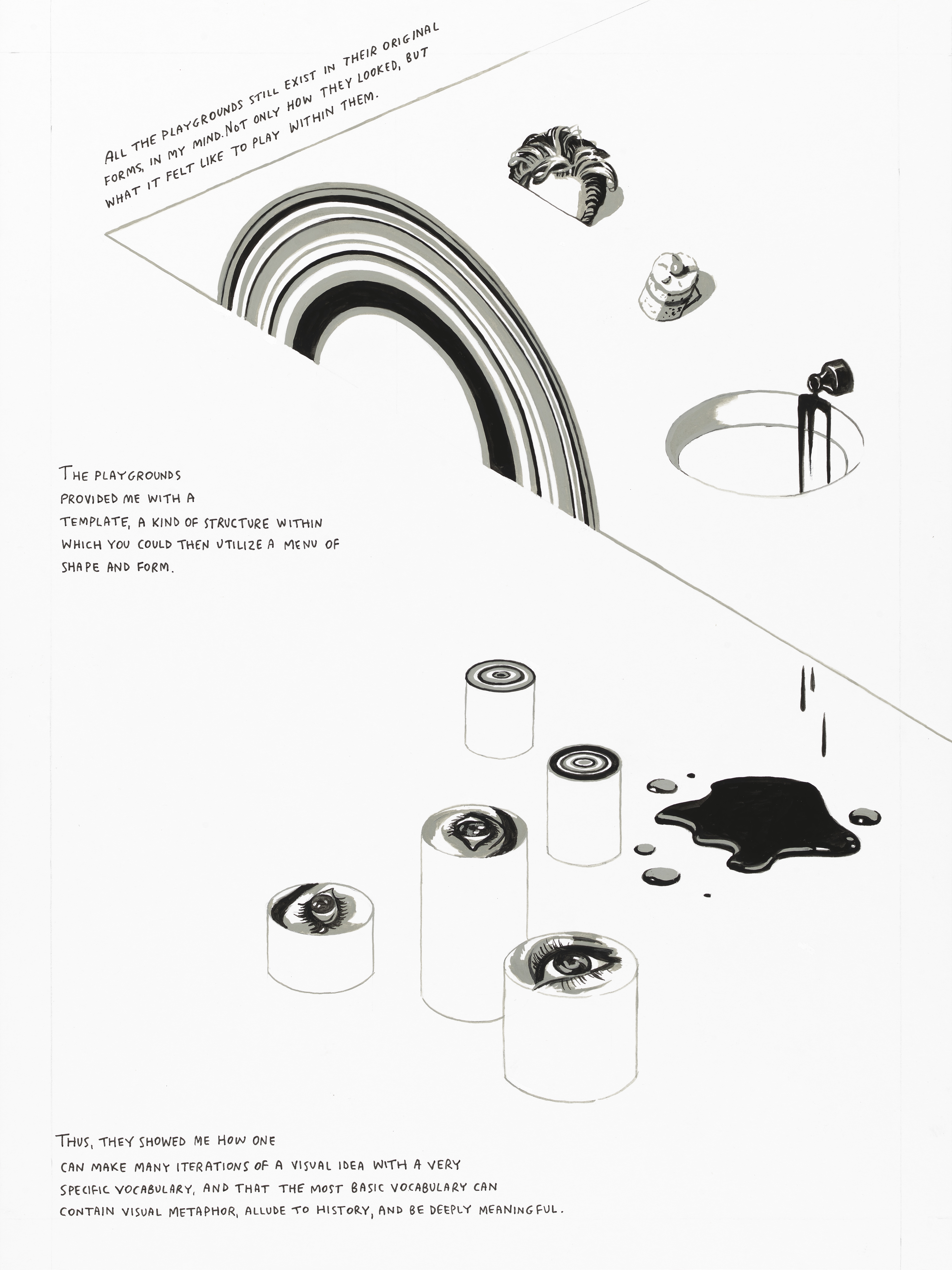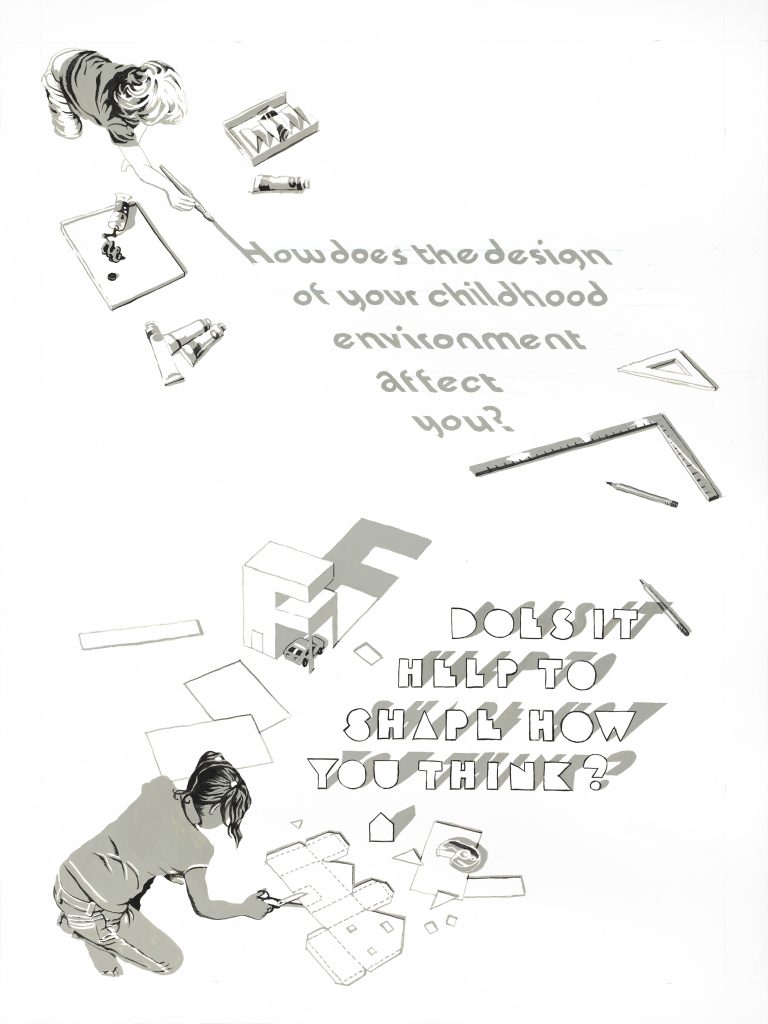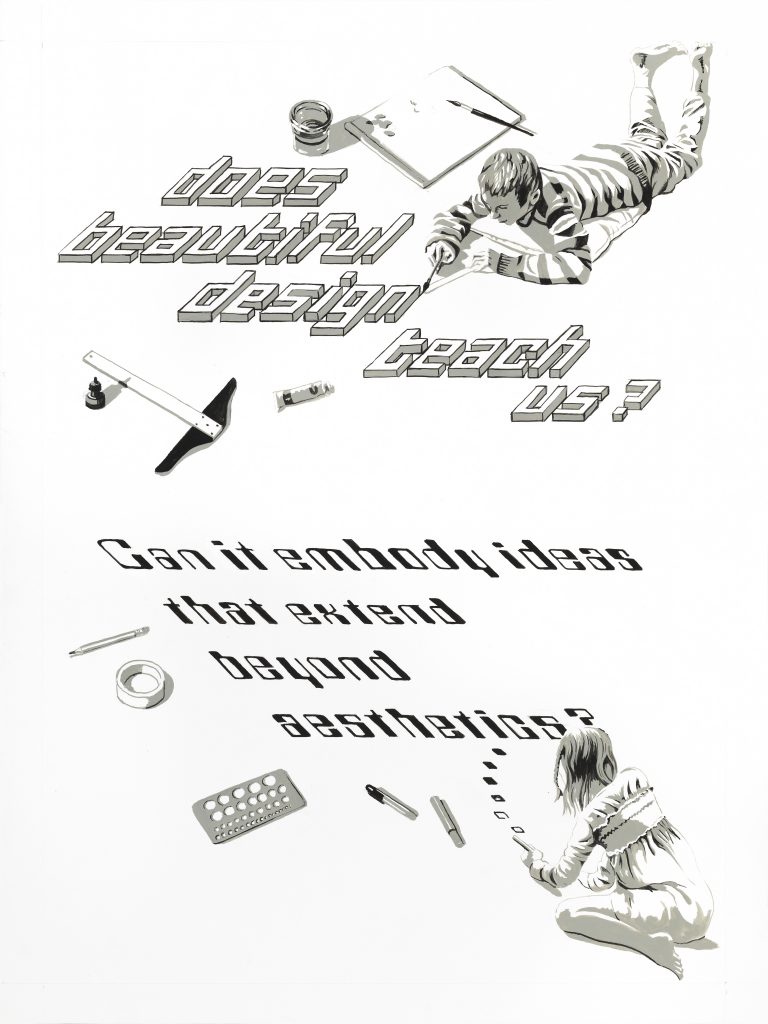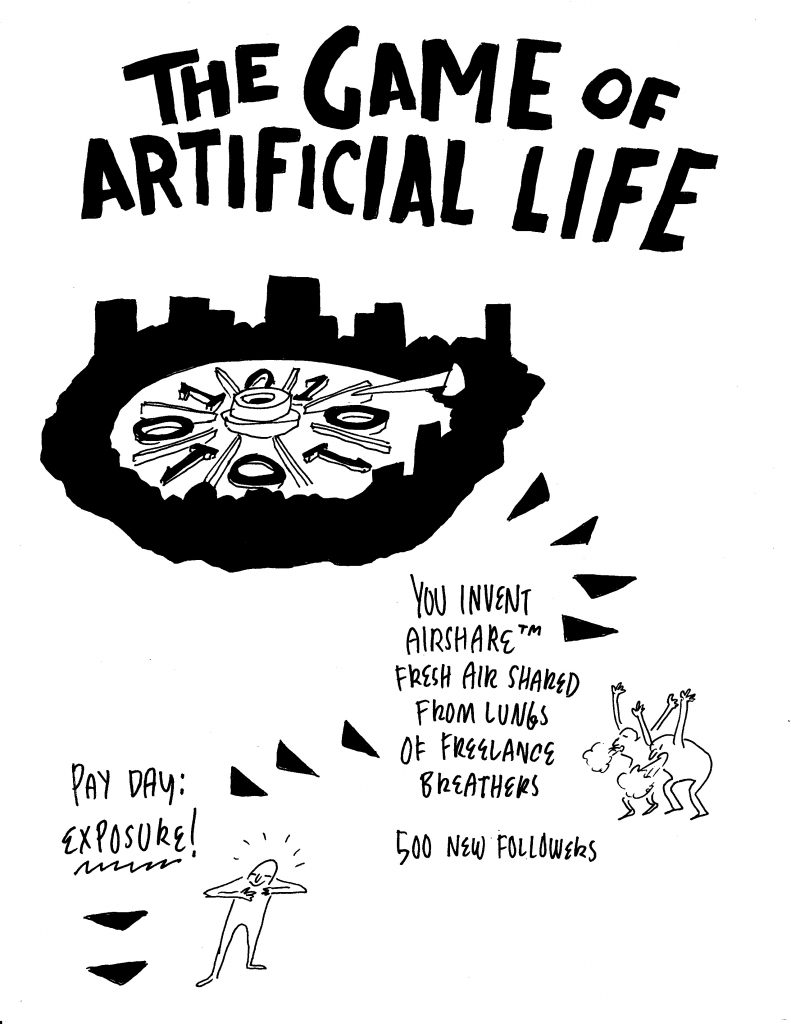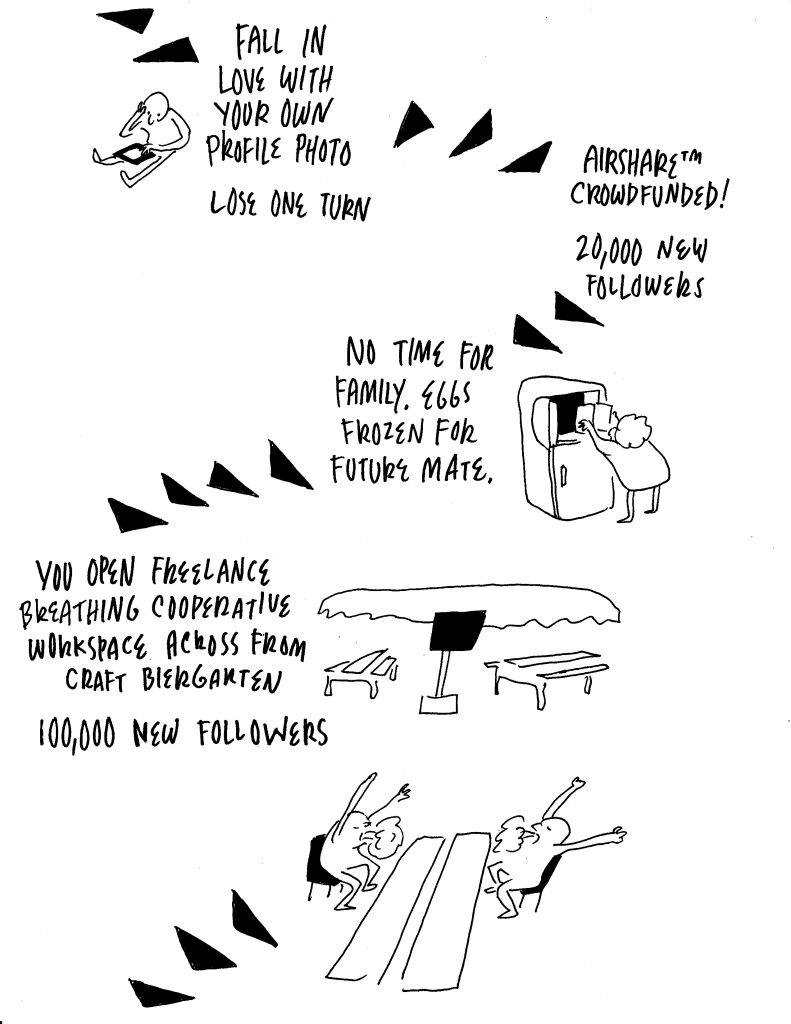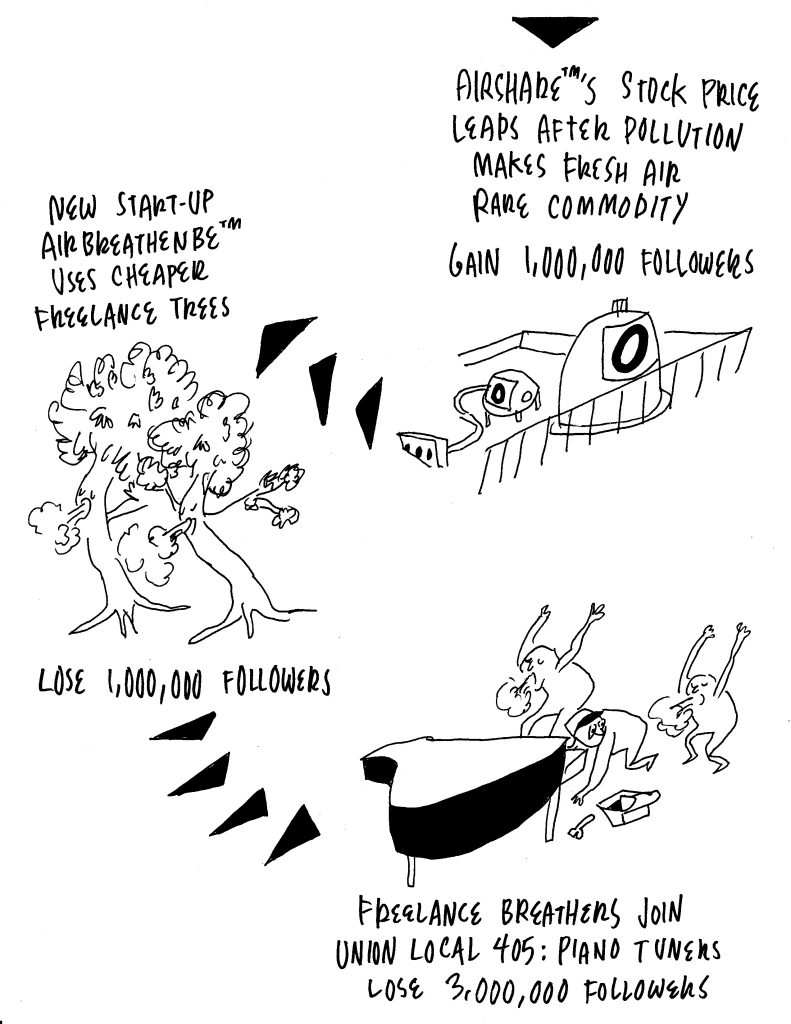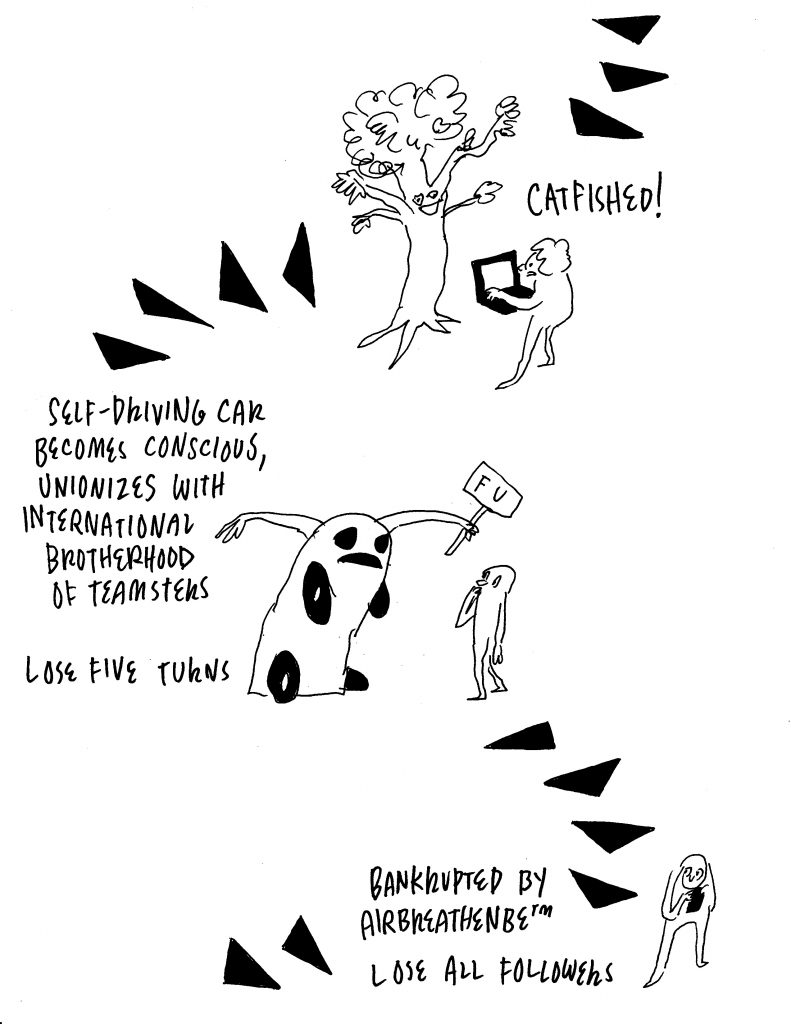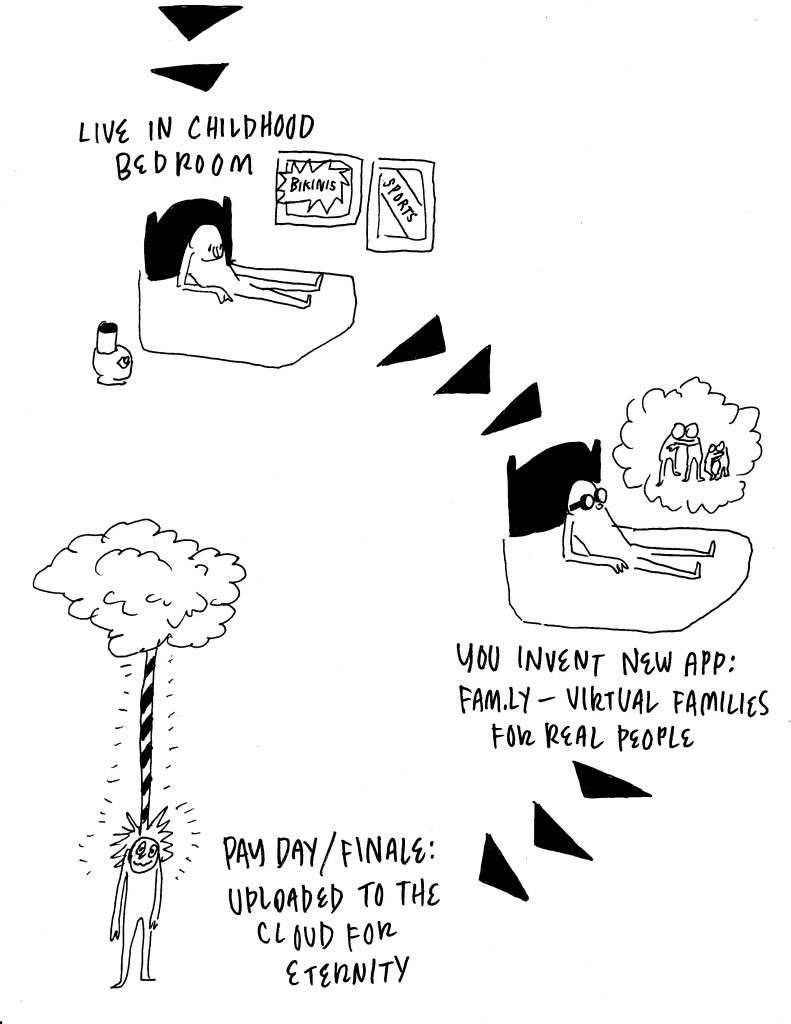Writer Rob Walker looks at some of the works on view in the PlayTime exhibition and finds wonder in the mundane and restlessness in constraint.
As a kid, I wasn’t big on playing traditional sports, but I quite enjoyed video games. This was a long-ago era, and my experiences involved arcade “quarter games” (as my peers and I called them) and a TV-connected console called Intellivision—a rival to the more iconic Atari. I liked playing against friends, even against the machine itself. But I also liked playing with the games.
One vivid example involved an auto-racing game—you’d use the controller to maneuver a car around a twisting track, as quickly as possible, and avoiding a crash with aggressive rivals. But somehow, at some point, I figured out that if you drove off the track, at just the right spot, the car would keep motoring out into no-man’s land, among digital trees and what seemed like odd patches of abandoned track. Crashing ended the game of course, but it was possible to go so far into these virtual woods that you would eventually arrive back at the original course. Perhaps the idea was that you’d driven all the way around the world; perhaps it was just a glitch. But it was completely delightful, and is easily the most distinct memory I have left of many hundreds of hours of game play.
We think of games as a form of distraction or escape—something that removes us from the serious and important, perhaps from reality itself. But is that really the case? The works gathered for PlayTime, as irreverent and fun and even funny as they may be, suggest almost the opposite. If you’re looking for serious insight into what’s important and real, you’d do well to adopt the cunningly playful mindset that these artists display. Over and over, the artists here reveal how games and play can focus our attention on the telltale details and hidden truths that underpin our day-to-day. Play turns out to depend on, and reveal, a subversive way of perceiving and engaging with the world. As with my little car-game adventure, play gets most interesting when it lights to discovery, surprise, mystery, even wonder.
Take, as a simple example of subversive perception, Cory Arcangel’s 2003 Totally Fucked. To make the piece, the technically adept Arcangel, whose work consistently displays a kind of hyper-fluency with digital culture, modified the code of the cartridge game Mario Bros. Normally, the protagonist Mario, controlled by the player, moves from left to right across a digital landscape, trying to avoid or conquer enemies and reach an end point that takes him to the game’s next level. On the way, he interacts with floating cubes that may contain helpful items.
With a gesture of elimination, Arcangel makes us think about whether permanent stasis might be even worse than ‘losing.’
Totally Fucked eliminates almost all of this, placing Mario atop one of the cubes, floating mid-air, in an infinite loop, with no ground, opponents, or allies. This scenario is surely nothing the game’s designers wanted players to imagine, and of course it reduces Mario’s epic journey to a standstill. But with this gesture of elimination, Arcangel makes us think not only about what to make of a game environment absent of obstacles or even movement, but about whether permanent stasis might be even worse than “losing.” There is no challenge or competition left; just a hopeless predicament, a character uncomfortably alone in a blue-sky void. Maybe this is what happens when you playfully degamify a game. Certainly it makes the viewer look closely at something she was never really meant to see.
This spirit recurs throughout PlayTime. Maybe the most extreme example of a work that playfully draws our attention to something we take for granted seldom actively consider is Martin Creed’s Work No. 329. It is, in short, a room half-full of cheerful, pink party balloons. Creed has made a number of variations on the piece with different-colored balloons, but in all cases the impact is immediate and clear—and, I would say, pretty funny. And fun: the piece is designed to be walked into and experienced from within itself, by anyone who’s game.
The artist is known for a deadpan sensibility guided by intentional, rule-like constraints, frequently designed to draw as much meaning as possible from the most mundane objects or gestures. The resulting works—confounding to some, no doubt—have included a balled sheet of paper, and an empty room illuminated by timed lights. Work No. 329 is an almost child-like means of raising some pretty serious questions about the nature of art. Is the raw material here the balloons or, more compellingly, air itself? (But only the half in the balloons; the rest of the air presumably remains non-art.)
Wurm has been doing this since the late 1990s, and on some level the series amounts to a constant reinvention of rules.
To take this process of playfully challenging our usual habits of perception in another direction, Erwin Wurm’s long-running One Minute Sculpture series converts the artwork from a thing that you look at to a thing that you do. In short, Wurm presents a set of written or drawn instructions, proscribing a particular interaction with a specific object or object at hand; you are meant to follow the instruction, and hold the pose for a sixty seconds. You might be instructed to lay on your back in a chair, feet pointed skyward. Or stick your legs through a modified table. Or take off a shoe and listen to it. This is the sculpture. Wurm has been doing this since the late 1990s, and on some level the series amounts to a constant reinvention of rules: making the “sculpture” as much a game as a collaborative and ephemeral performance.
Artists surely know as much as athletes about the pros and cons of playing by rules. Mark Bradford’s remarkable 2003 video Practice offers a particularly poetic example. It shows the artist, a six-foot-seven-inch African-American man, moving around a basketball court, trying to dribble and make shots … while wearing an antebellum hoop skirt four feet in diameter, made out of a Los Angeles Lakers uniform.
The practice of using play to reveal rather than to escape can be taken out of the realm of actual game mechanics.
The combination of symbols is both jarring and absurd: Something about this particular set of constraints makes it hard to decide whether to laugh or wince, as Bradford struggles to control the ball, loses his balance, crashes to the hard ground. But on he persists. When he finally manages to overcome the constraints and hit a shot, you want to cheer—maybe for the triumph, or maybe just out of relief.
The practice of using play to reveal, rather than to escape or distract, can be taken well outside the realm of actual game mechanics. Roman Signer’s work, sometimes described as “action sculptures,” is marked by an almost adolescent delight in misusing materials in revelatory ways. Often this entails juxtapositions that feel like the daydreams of a genius juvenile delinquent.
In the video Office Chair, a definitive symbol of stultifying work is transformed into a splendid toy, thanks to the use of handheld rockets. In Kayak, a nature sport crashes the built environment, with Signer dragged in a boat along a road by a truck. Punkt finds the artist pacifically arranged before a canvas in a field, the natural beauty interrupted by the unexpected arrival of an explosive. There’s an air of the successful prank around each piece, leaving the viewer with the definite sense of having watched somebody get away with something—but left to make the final decision about just what that something is.
Revising forgotten toys into beautiful objects, Woodgate plays a quietly subversive game.
Agustina Woodgate’s collection of rug-like wall hangings constructed from the “skins” of stuffed animal toys offer such a different tone that they seem to occupy another world altogether: silent, sweet, beautiful, and oddly comforting. But really her game is not so different.
While open to various interpretations, the pieces remind me first of the familiar bearskin rug: the grotesque (to me) trophy of a sporting hunter. Woodgate has described the series as evolving from her relationship with a childhood toy, a teddy bear she had named Pepe. The object had outlived its intended use, but she was reluctant to throw it out. Buying up other neglected stuffed animals from thrift stores, she began repurposing their “skins” into complicated and colorful mosaic rugs (often in a more Eastern aesthetic far removed from the cringe-worthy kitsch of the pelt-as-décor). Revising forgotten toys into the raw material of freshly beautiful objects, Woodgate plays a quietly subversive game.
I invoked video games at the beginning of this essay because the digital realms we access through consoles, computers, smartphones, and smart watches have collectively become perhaps our most pervasive space for play. They may also be our most contested. These are places where we indulge in private fun—and where others do the same thing in ways that sometimes worry us: When, we wonder, does diversion become detachment?
Cao Fei made her name through explorations of digital play spaces.
Chinese artist Cao Fei made her name in part through incredibly adventurous and original explorations of digital play spaces, with a particular focus on the personal-identity games that attach to the virtual-world avatar. In doing so she demonstrated a remarkable fluency in everything from “cosplay” to Second Life, practices and realms that allow participants to blur lines among reality, aspiration and fantasy in ways that seem distinct to our era.
She’s carried that fluency into an increasingly far-flung and ambitious territory. In PlayTime, examples pop up, tellingly, in two distinct sections within the show. The installation Rumba 01 & 02 repurposes the popular vacuum robot as artworks—an amusing gesture, to be sure. But it’s the video Shadow Life that, despite or really because of its own aesthetic charms, takes her game to another level.
Reportedly inspired by an official state broadcast of a Chinese Spring Festival Gala from the artist’s childhood, the video unfolds in the form of a remarkable shadow puppet sequence, backed by propagandistic martial music. A silly dog shadow emerges from a demagogue’s shouty face; clutches of mindlessly applauding hands morph into a childish dance; fists dissolve into animals; accusatory fingers chase a rabbit into a sweet embrace. But the visual gags often get dark: the rabbit held in a threatening grip, a swan shadow puppet suddenly gripped by the throat. It’s ultimately a grim story that plays out in two dimensions, black and white. When does this game subvert terror, and when does it simply disguise it? Can we still tell the difference? The answer surely matters.
Way back in the quarter-game era of my adolescence, the phrase “game over” made the leap from the final screen of any given play session into daily parlance, signifying a definitive end, any decisive victory or defeat. The artists in PlayTime offer a collective rebuke to the idea that a game ends, or that it’s always possible to identify its beginning. Play simply persists, or it certainly ought to, all the time and everywhere. Not because we need it to escape, but because it helps us find different ways to engage. We need to play. Game ongoing. ♦
(Image credits: Courtesy of the artist, photo by Bob Packert/PEM. Courtesy of the artist, © Cory Arcangel. Courtesy of the artist, photo by Bob Packert/PEM. Photo by Bob Packert/PEM. Courtesy of the artist and Hauser & Wirth, Zurich. Courtesy of the artist and Hauser & Wirth. Courtesy of Spinello Projects, photo by Joshua Aronson. Courtesy of the artist, photo by Allison White/PEM.)

